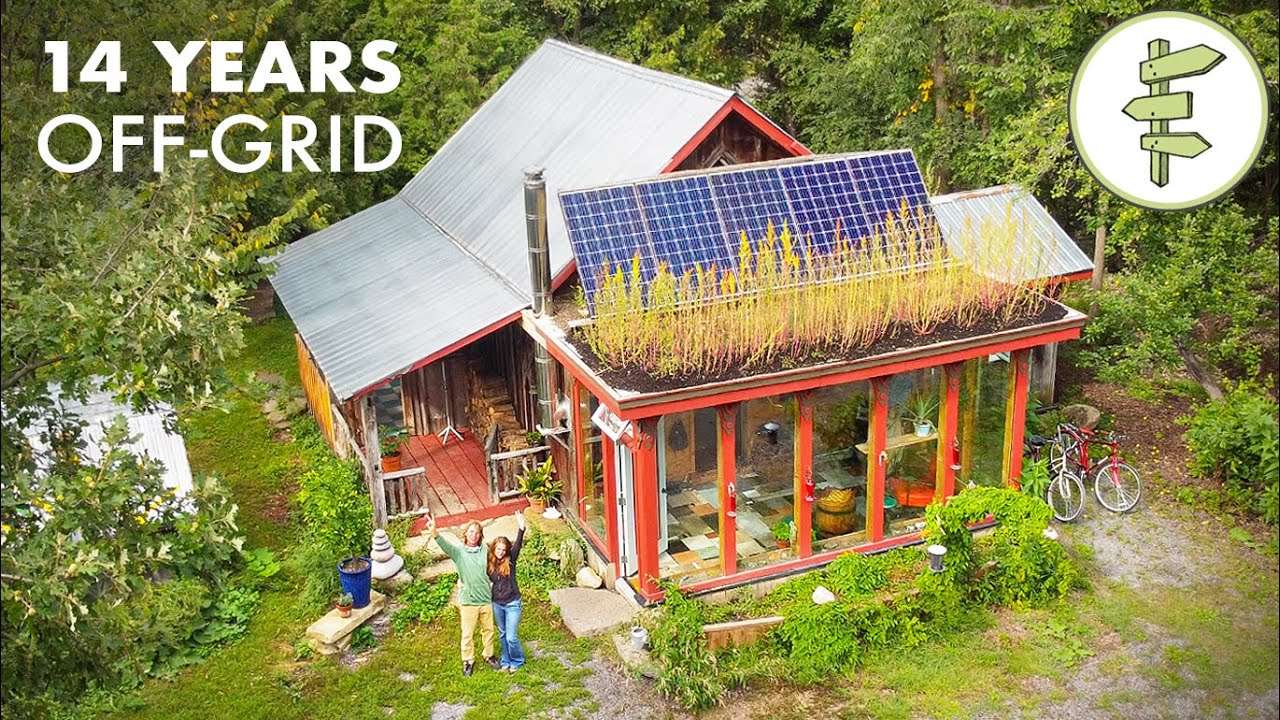Living off-grid has become an increasingly popular lifestyle choice for many individuals seeking independence and sustainability. But the question remains: how do you actually build a shelter or home that allows you to disconnect from traditional power and water sources? In this article, I will explore the various techniques and materials used in constructing off-grid shelters, providing valuable insights and practical tips for those looking to embrace a self-sufficient lifestyle.

Selecting the Location
When it comes to building a shelter or home off-grid, the first step is selecting the right location. This decision will shape the overall experience of living off-grid, so it’s important to consider various factors before making a final choice.
Determining the Purpose
Before settling on a location, it’s essential to determine the purpose of the off-grid shelter. Are you looking to live completely self-sufficiently or do you simply want a quiet retreat away from the hustle and bustle of urban life? Understanding your intention will help you find the perfect spot that aligns with your goals.
Evaluating the Surroundings
Once you have determined the purpose, it’s time to evaluate the surroundings of potential locations. Consider the local geography, topography, and natural surroundings. Look for areas with abundant natural resources, such as water sources, fertile land, and sun exposure for renewable energy systems. Additionally, consider the landscape for its aesthetic value, as being surrounded by natural beauty can enhance the off-grid experience.
Assessing Accessibility and Transportation
Access to your off-grid shelter is crucial for practical reasons. Consider the accessibility of the location by road and the proximity to essential services like hospitals, grocery stores, and schools. Also, evaluate transportation options to and from the location. If the area is difficult to access in certain seasons or requires a long commute, it may not be the most suitable choice.
Considering Climate and Weather Conditions
The climate and weather conditions of a location play a significant role in off-grid living. Assess the average temperatures, rainfall patterns, and extreme weather events like hurricanes or snowstorms. Choose a location with a climate that aligns with your preferences and offers a sustainable environment for your shelter, such as plenty of sunshine for solar energy systems or abundant rainfall for water collection.
Designing the Shelter
Once you have selected an ideal location, it’s time to design your off-grid shelter. This involves making decisions about the type of shelter, its size and layout, safety measures, and multi-functionality.
Choosing the Type of Shelter
There are various types of shelters that can be suitable for off-grid living, including tiny houses, cabins, yurts, or even sustainable modular homes. Consider your needs, preferences, and budget when choosing the type of shelter that fits best with your off-grid lifestyle.
Determining the Size and Layout
The size and layout of your shelter will depend on the number of people it needs to accommodate and your specific living requirements. Think about the number of bedrooms, bathrooms, living spaces, and any additional rooms you may need, such as a home office or storage area. Optimize the layout to maximize your available space and consider open floor plans that can easily be adapted to different purposes.
Considering Safety Measures
When living off-grid, safety should be a top priority. Incorporate safety measures into the design of your shelter, such as reinforced walls, sturdy doors, and windows with high-quality locks. Consider installing a security system to protect your property and ensure the safety of your loved ones.
Planning for Multi-functionality
Off-grid living often requires versatility in the use of space. Plan for multi-functionality by incorporating flexible furniture, foldable beds, and convertible rooms. This way, you can easily adapt your living areas to meet different needs, whether it’s hosting guests, working from home, or engaging in hobbies.
Sourcing Building Materials
Building an off-grid shelter requires careful consideration of the building materials to use. It’s important to analyze local resources, explore sustainable options, and calculate material quantities.
Analyzing Local Resources
Utilizing local resources for building materials helps minimize costs, reduce environmental impact, and ensures the connection between the shelter and its surroundings. Look for locally available materials like timber, stone, or earth for construction. Not only will this support the local economy, but it will also provide a unique and authentic aesthetic to your off-grid home.
Exploring Sustainable Options
Incorporating sustainable building materials is vital for minimizing the environmental footprint of your off-grid shelter. Consider using materials with a low embodied energy, such as recycled or reclaimed materials. Additionally, explore eco-friendly alternatives to conventional building materials, such as bamboo flooring or insulation made from natural fibers.
Calculating Material Quantities
To avoid inefficiencies and unnecessary costs, it’s important to calculate the required quantities of building materials accurately. Create a detailed list of materials needed for each stage of the construction process, including the foundation, walls, roof, and utilities. This will help you estimate the costs and ensure that you have everything on hand when you start building.

Constructing the Foundation
The foundation is the backbone of any structure, providing stability and support. Building a strong and durable foundation for your off-grid shelter is essential for its longevity and safety.
Preparing the Ground
Before starting the foundation construction, the ground needs to be adequately prepared. Clear any vegetation or debris from the building site and level the ground as much as possible. This will help ensure a stable and even foundation.
Choosing the Foundation Type
There are several types of foundations to consider when building an off-grid shelter, including slab foundations, crawl spaces, or raised foundations. The choice will depend on factors such as soil conditions, local building regulations, and personal preferences. Consult with an engineer or a building professional to determine the most suitable foundation type for your specific location and shelter design.
Building the Foundation
Once the ground is prepared and the foundation type is chosen, it’s time to start construction. Follow the building plans and instructions carefully, ensuring proper reinforcement and drainage systems are in place. Take your time during this stage, as a sturdy and well-built foundation is vital for the stability and integrity of your off-grid shelter.
Building the Walls and Roof
With the foundation complete, it’s time to focus on building the walls and roof of your off-grid shelter. This stage involves choosing walling materials, constructing the walls, installing doors and windows, designing the roof, and selecting roofing materials.
Determining the Walling Material
The choice of walling material will depend on factors such as climate, availability, durability, and personal preferences. Options include traditional materials like bricks, stones, or timber, as well as eco-friendly alternatives such as rammed earth or straw bales. Consider the insulation properties and maintenance requirements of each material before making a decision.
Constructing Exterior and Interior Walls
With the walling material chosen, it’s time to start constructing the exterior and interior walls. Follow the building plans and instructions carefully, ensuring proper insulation, reinforcement, and waterproofing. Consider incorporating additional features like built-in shelves or alcoves, which can add both functionality and aesthetic appeal to your off-grid shelter.
Installing Doors and Windows
Installing doors and windows is a crucial step in creating a livable and comfortable environment within your off-grid shelter. Choose high-quality, energy-efficient doors and windows that provide good insulation and security. Consider the placement of windows to maximize natural light and ventilation, taking advantage of the surrounding views.
Designing the Roof
The design of the roof plays a significant role in the overall aesthetics and functionality of your off-grid shelter. Consider factors such as rainwater collection, snow load capacity, and solar energy system integration when designing the roof. Choose a roof design that suits your preferences and complements the overall style of the shelter.
Installing Roofing Materials
Selecting the right roofing materials is essential for ensuring a watertight and durable shelter. Depending on your location and preferences, you can choose from a variety of options, including metal roofs, asphalt shingles, thatch, or solar roof tiles. Consider the lifespan, maintenance requirements, and energy efficiency of each material before making a final decision.
Installing Utilities
To create a comfortable and functional off-grid shelter, it’s necessary to install essential utilities such as electricity, renewable energy systems, water supply, and waste management systems.
Generating Electricity
Generating electricity off-grid requires careful planning and consideration of the available energy sources. Solar panels, wind turbines, or micro-hydro systems are popular choices for sustainable energy generation. Determine your energy needs, consult with professionals, and design a system that suits your requirements and location.
Installing Renewable Energy Systems
In addition to electricity generation, installing renewable energy systems can further enhance your off-grid living experience. Consider incorporating solar water heaters, passive solar design, or geothermal heating and cooling systems to reduce your reliance on non-renewable resources and minimize energy consumption.
Providing Water Supply
Access to clean water is essential for off-grid living. Explore different options for water supply, such as drilling a well, collecting rainwater, or utilizing nearby water sources like rivers or lakes. Ensure proper filtration and storage systems are in place to guarantee a safe and reliable water supply for daily needs.
Designing Waste Management Systems
Off-grid living promotes sustainability, including responsible waste management. Design waste management systems that include composting toilets, greywater recycling, and recycling facilities for other waste materials. Minimize waste production and aim for a self-sufficient and eco-friendly approach to waste management.
Insulation and Ventilation
Insulation and ventilation are crucial for maintaining a comfortable and energy-efficient off-grid shelter. Proper insulation helps regulate indoor temperatures, while effective ventilation ensures fresh air circulation.
Choosing Insulation Materials
Selecting the right insulation materials is essential for optimizing energy efficiency and reducing heat loss or gain. Consider eco-friendly options such as natural wool, recycled cellulose, or rigid foam insulation boards. Take into account the insulation properties, costs, and environmental impact of each material.
Insulating Walls, Roof, and Floor
Insulate the walls, roof, and floor of your off-grid shelter to minimize heat transfer and ensure optimal thermal comfort. Follow best practices and installation guidelines when installing insulation materials. Pay attention to areas prone to air leakage, such as around windows and doors, and seal them properly to maximize energy efficiency.
Designing Proper Ventilation
Good ventilation is essential for maintaining healthy indoor air quality and preventing issues like mold or dampness. Incorporate natural ventilation strategies by strategically placing windows, vents, or skylights to encourage airflow. Consider energy-efficient ventilation systems like heat recovery ventilators to minimize heat loss during the ventilation process.
Interior Design and Furnishing
Creating a functional and aesthetically pleasing interior is essential for a comfortable off-grid living experience. Consider the following aspects when designing and furnishing your off-grid shelter.
Creating Functional Living Spaces
Analyze your lifestyle and daily routines to determine the best layout and arrangement of your living spaces. Consider factors such as adequate lighting, accessibility, and ease of movement while ensuring that the space aligns with your needs and preferences. Think about multipurpose furniture and clever storage solutions to optimize your available space.
Selecting Eco-friendly Materials
When choosing materials for interior design, prioritize eco-friendly options. Look for sustainable alternatives to conventional materials, such as bamboo flooring, reclaimed wood furniture, or natural fiber textiles. Consider the environmental impact, durability, and maintenance requirements of each material to make informed choices.
Designing Storage Solutions
Effective storage solutions are crucial for maximizing space and maintaining organization in an off-grid shelter. Consider built-in shelves, multipurpose furniture with hidden storage compartments, and creative solutions like vertical gardens or hanging storage. Customizing storage options to your specific needs will ensure a clutter-free living environment.
Incorporating Off-grid Living Essentials
Off-grid living often requires additional systems or equipment to meet basic needs. Incorporate essentials like a composting toilet, rainwater filtration system, or a solar-powered refrigerator. Consider the space requirements and ensure that these systems align with the overall design and functionality of your off-grid shelter.
Security and Safety Measures
Ensuring the security and safety of your off-grid shelter is of utmost importance. Implement the following measures to protect your property and loved ones.
Building Perimeter Fences
Constructing a sturdy perimeter fence around your off-grid shelter provides an initial level of security. Choose materials that are durable and suitable for your specific location, such as chain-link fences or wooden fences. Ensure proper gating and locking systems to control access to your property.
Installing Security Systems
Install a comprehensive security system to protect your off-grid shelter. This can include security cameras, motion sensors, or an alarm system that alerts you to any unauthorized access. Additionally, consider installing a monitoring system that allows you to remotely monitor your property and provides peace of mind when away.
Ensuring Fire Safety
Implement fire safety measures to protect your off-grid shelter and the surrounding environment. Install smoke detectors, fire extinguishers, and fire-resistant materials in critical areas. Create a fire safety plan and educate all residents and visitors on safety protocols. Regularly check and maintain these systems to ensure they are functioning properly.
Developing Sustainable Landscaping
Sustainable landscaping can enhance the beauty and self-sufficiency of your off-grid shelter. Consider the following elements when designing your landscape.
Establishing Permaculture Design
Create a permaculture design that incorporates various sustainable practices, such as companion planting, rainwater harvesting, and natural pest control. Maximize the efficiency of your landscape by creating food forests, integrating livestock, and reducing waste.
Planting Native Vegetation
Choose native plants for your off-grid shelter’s landscape. Native plants are adapted to the local climate and require less maintenance, water, and resources. They also support the local ecosystem by providing habitat and food for local wildlife.
Implementing Rainwater Harvesting
Collecting rainwater is an effective way of conserving water and reducing reliance on outside water sources. Implement rainwater harvesting systems, such as rain barrels or underground cisterns, to capture and store rainwater for irrigation purposes. Consider incorporating a filtration system to ensure water quality.
Creating Food Production Systems
Incorporate food production systems into your off-grid landscape to increase self-sufficiency and sustainability. This can include vegetable gardens, fruit orchards, or small livestock farming. Utilize permaculture principles to create productive and resilient food systems that require minimal external inputs.
By following these comprehensive steps, you can build a well-designed and sustainable off-grid shelter. From selecting the location to creating a functional and comfortable living space, every aspect contributes to a successful off-grid lifestyle. Remember to consider your personal needs, incorporate sustainable practices, and consult with professionals when necessary. Enjoy the freedom and self-sufficiency that off-grid living has to offer!




